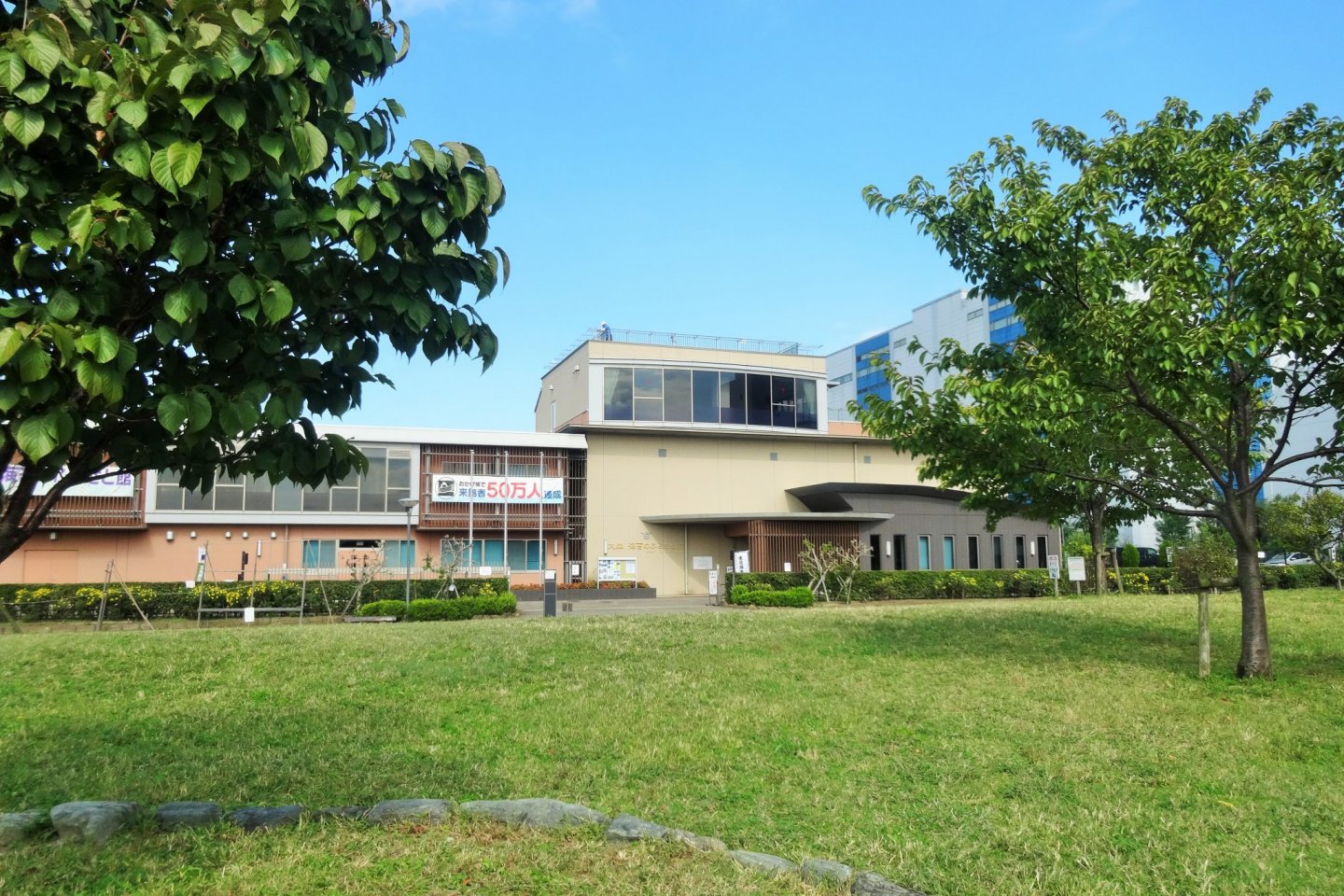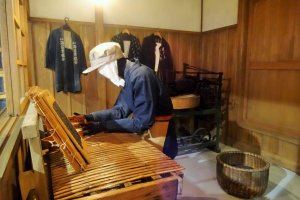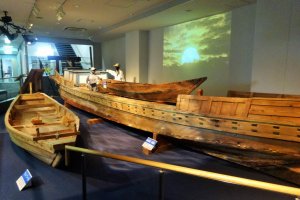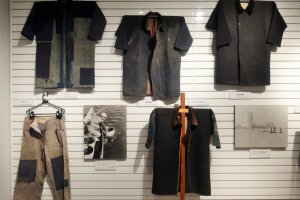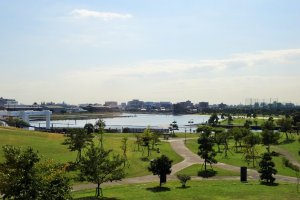During the Edo Period (1600–1868), the area of Omori in Ota Ward was known for its cultivation of nori, the crackly sheets of seaweed most commonly wrapped around plump rice balls or sushi rolls. While development along the shores of Tokyo Bay after World War II led to the collapse of the Omori nori industry, the area’s seaweed-harvesting heritage is carefully recorded in the Omori Nori Museum.
The museum exhibits cover three floors, with an English pamphlet available to help orient non-Japanese speakers. The first floor video introduces the process of nori cultivation while large-scale dioramas – including the only remaining original noribune (nori boat) – help travelers to visualize the various steps.
On the second floor, well-curated exhibits showcase the numerous tools and clothes used in nori cultivation. Visitors can try balancing on the long stilts used to help secure the hibi, poles on which the nori would grow, into the sea floor or try on the typical clothes of a seaweed harvester.
The top floor of the museum holds a small lounge (with drink machines), with stellar views of the nearby Omori Furusato Hamabe Park from the picture windows.
The museum occasionally holds experiential courses, giving visitors the chance to try their own hand at making nori or make a paper version of a traditional noribune. Reservations for the classes are required in advance and can be made through the Ota Ward Tourism Center.
The museum is open from 9:00 to 17:00 (until 19:00 from June through August) daily except for the third Monday of the month and is free for visitors.
Getting there
The Omori Nori Museum can be reached in a fifteen-minute walk from either Heiwajima Station on the Keikyu Line or Ryutsu Center Station on the Tokyo Monorail.
